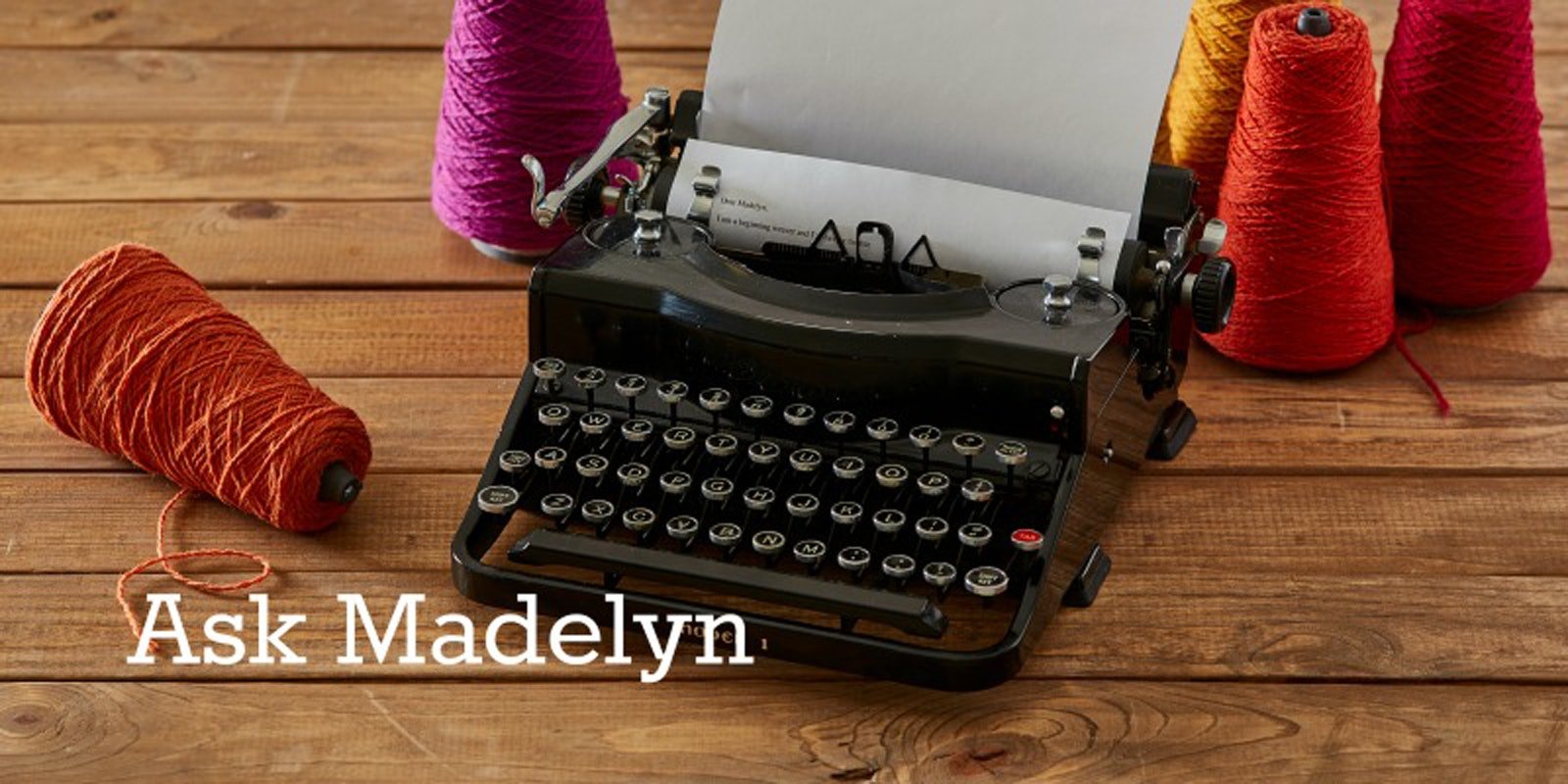When beaming warps, I understand a lot of weavers like to use water-filled recycled plastic bottles with handles as weights. Can you suggest another thing that can be used as a weight which isn’t quite as tall and so would not hit the floor after just a few cranks of the back beam? Finding room for something to act as a trapeze would be difficult! Also, what is the best way to secure the weight to a warp bout when beaming so that the warp threads within each bout are evenly weighted? —Anne
Hi Anne!
I've had variations of your question before, but not in reference to methods for attaching weights to a warp. In the late 1980s, I wove for a few days in a school in southern Sweden. It was a terrific experience because it gave me total immersion in Swedish weaving techniques. While I was there, assistants at the school warped several looms. The room with looms was very large, with a shiny (clean!) waxed floor. Two warpers placed the end of the warp in a basket that was weighted with heavy rocks (in plastic bags placed on top of the end of the warp chain). The basket started out about 20 yards down an aisle from the loom being warped (warp length spread on the floor along that distance). They cranked the beam and the basket skittered across the floor.
Because most rooms don't have 20 yards of floor available, the trapeze is a warping tool that is also often used in Sweden to apply weight to the warp for beaming. It has a crosspiece that is from 6 to 8 ft from the floor so that the warp can be weighted (weights attached to bouts of warp). They start off at floor level and then when they are cranked to the top of the trapeze the weights are detached and reattached at floor level. In your case, you'll be detaching and reattaching the weights whenever the weights are cranked to the height of the back beam. If you have a (clean) expanse of floor you can drag the weights along it for a while until they reach the back beam, in which case you can reattach them for the distance available on the floor.
If I were using plastic bottles, I'd probably attach an S-hook to the bottle (handle) and larkshead the warp bout around it (I'd try to do other weights in the same way, weight to S-hook, to larkshead). But there are probably many different ways to do that. You want to larkshead as much as possible so you don't have to undo and redo knots. Finding a weight that is as heavy as a plastic water-filled bottle but a lot smaller in length would be a bit tricky. You can use clusters of fishing weights, plastic bags of rocks—you'd have to experiment!
So that the warp threads are evenly weighted, you would want to weight relatively small bouts with equal weight and NEVER comb or in any way realign the threads (from their relationship to each other that was formed on the warping board).
This very issue of attaching and reattaching or dragging weights along the floor or through space has always seemed harder to me than the crank and yank method I prefer. I divide the warp into 2" sections and pull on these sections evenly and firmly after every turn of the beam. In doing this, as per the above, I never comb or otherwise allow the threads to move from their relationship to each other on the warping board. I know of weavers that have found weighting methods to be efficient and work well, however.
—Madelyn
If you have a weaving question please email Madelyn! View related & recent "Ask Madelyn" posts! Updated August 5, 2019.

